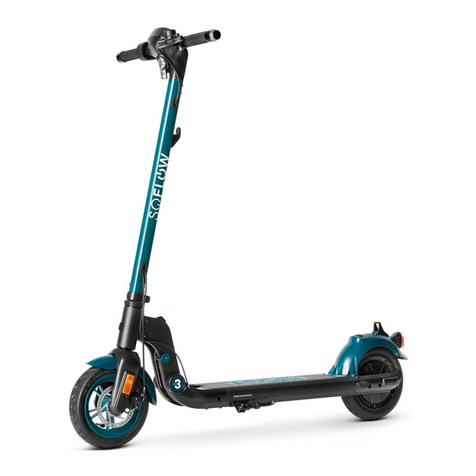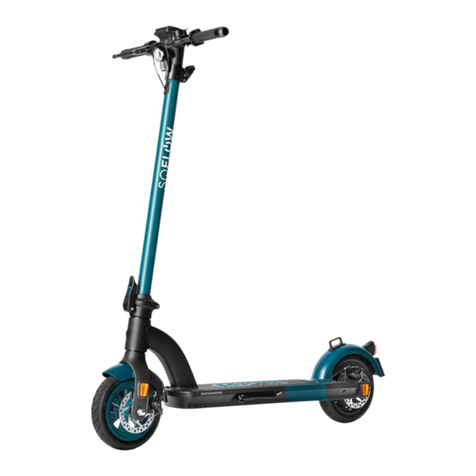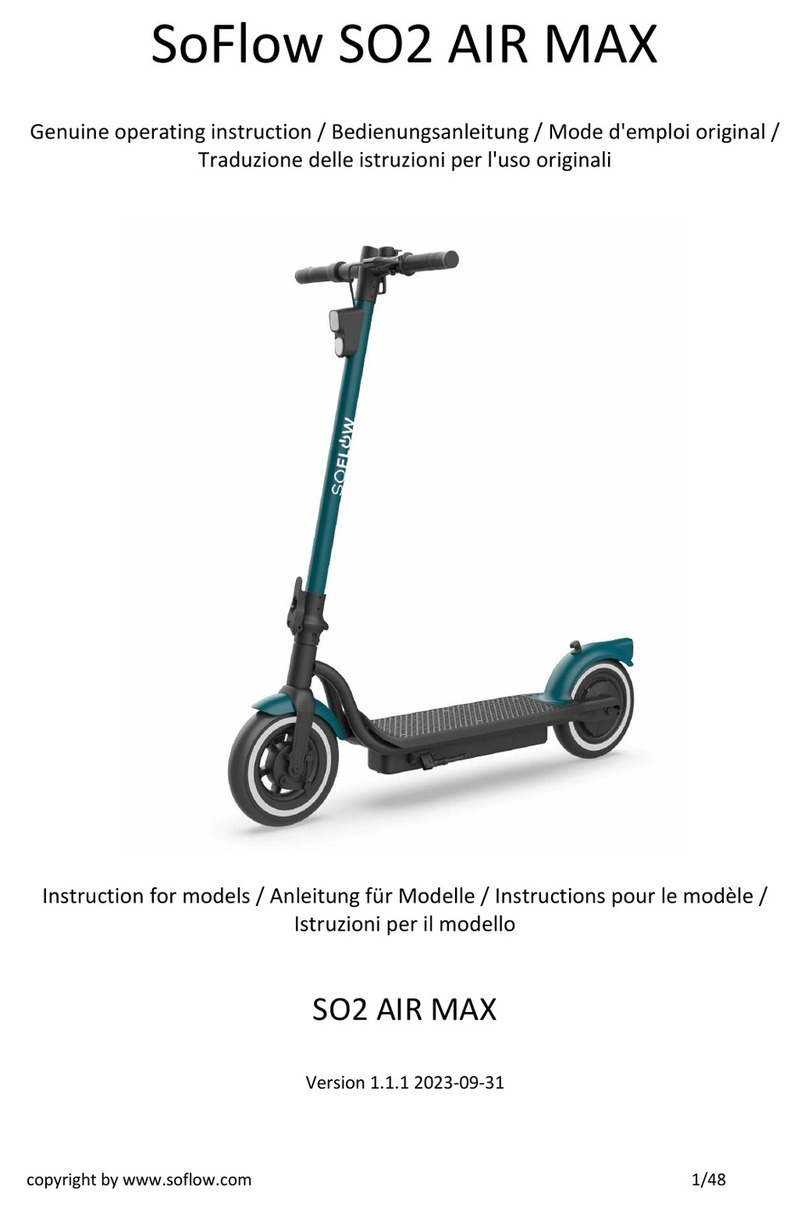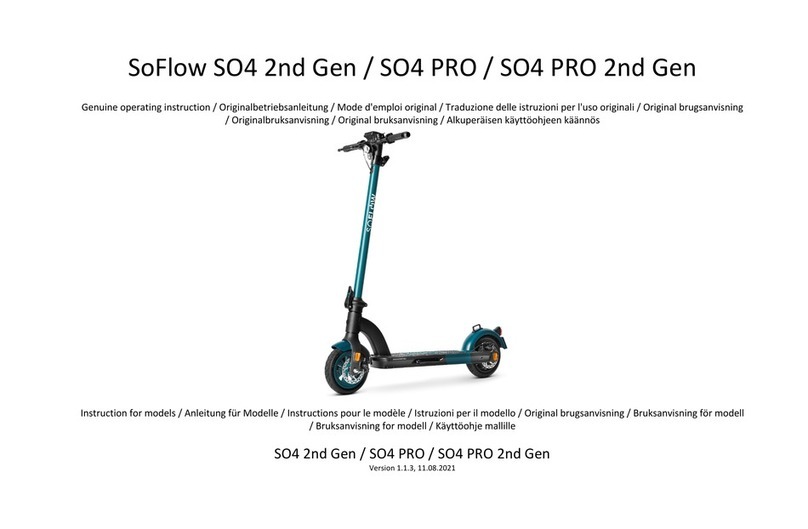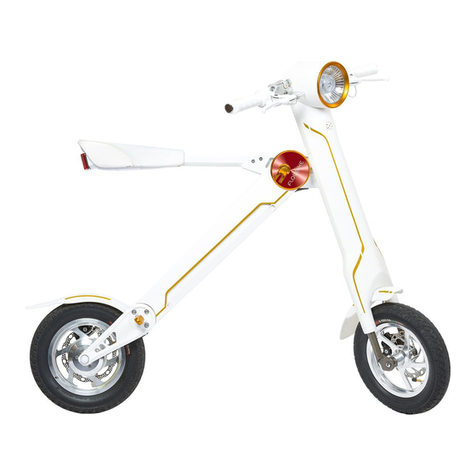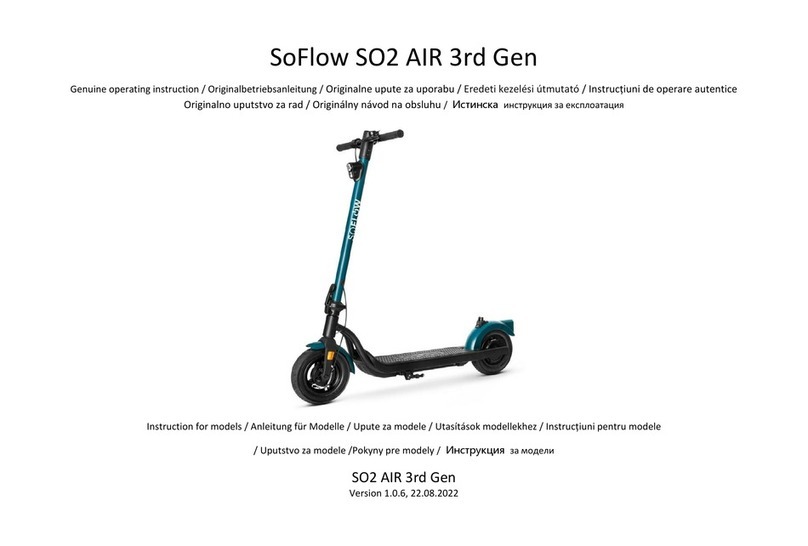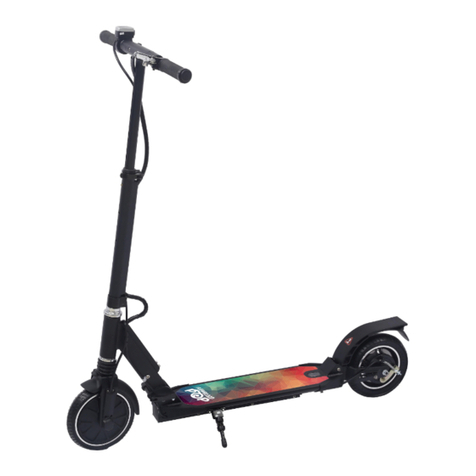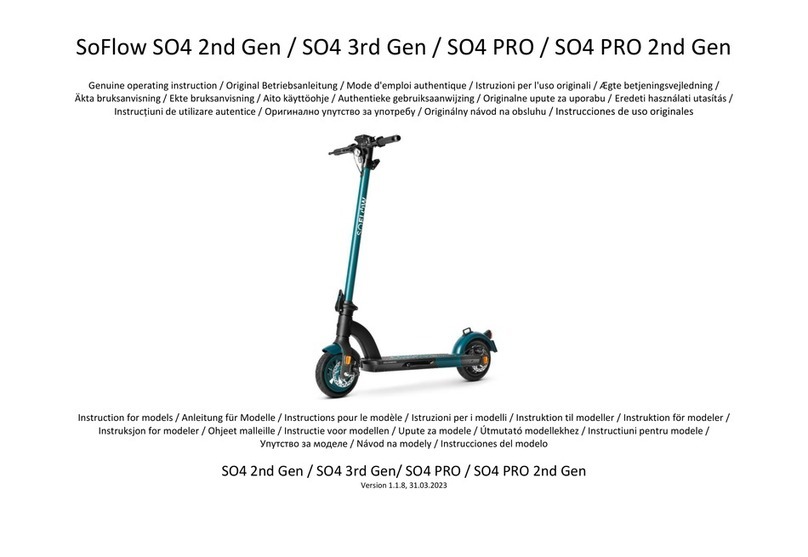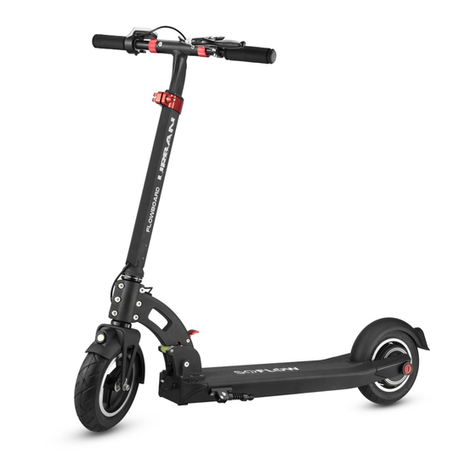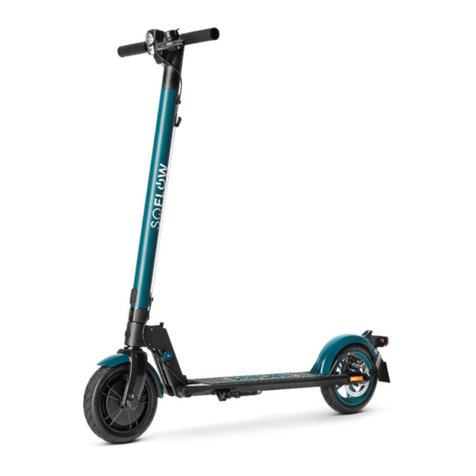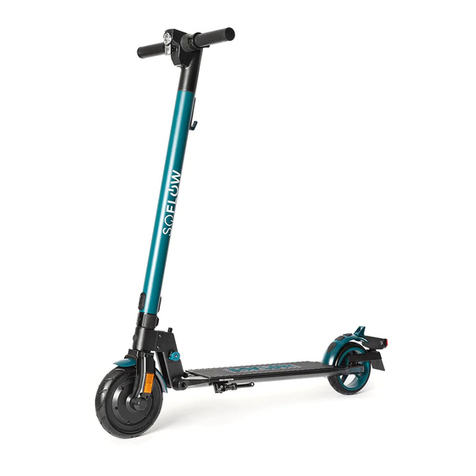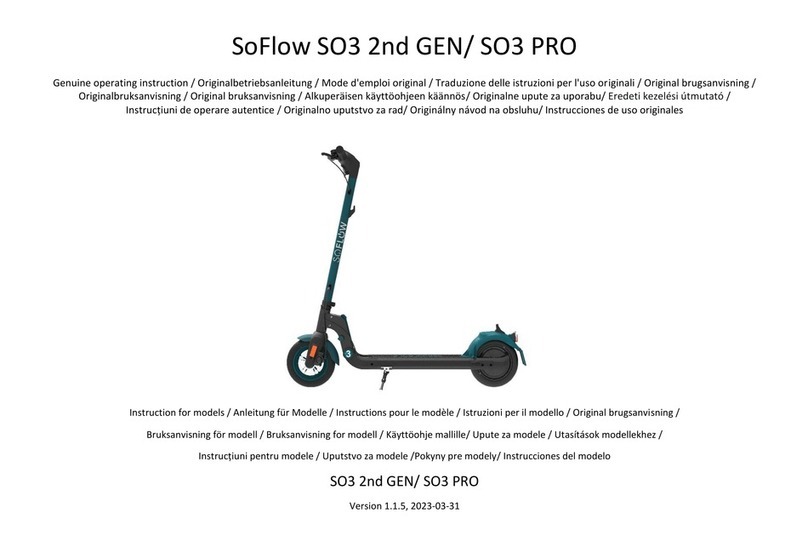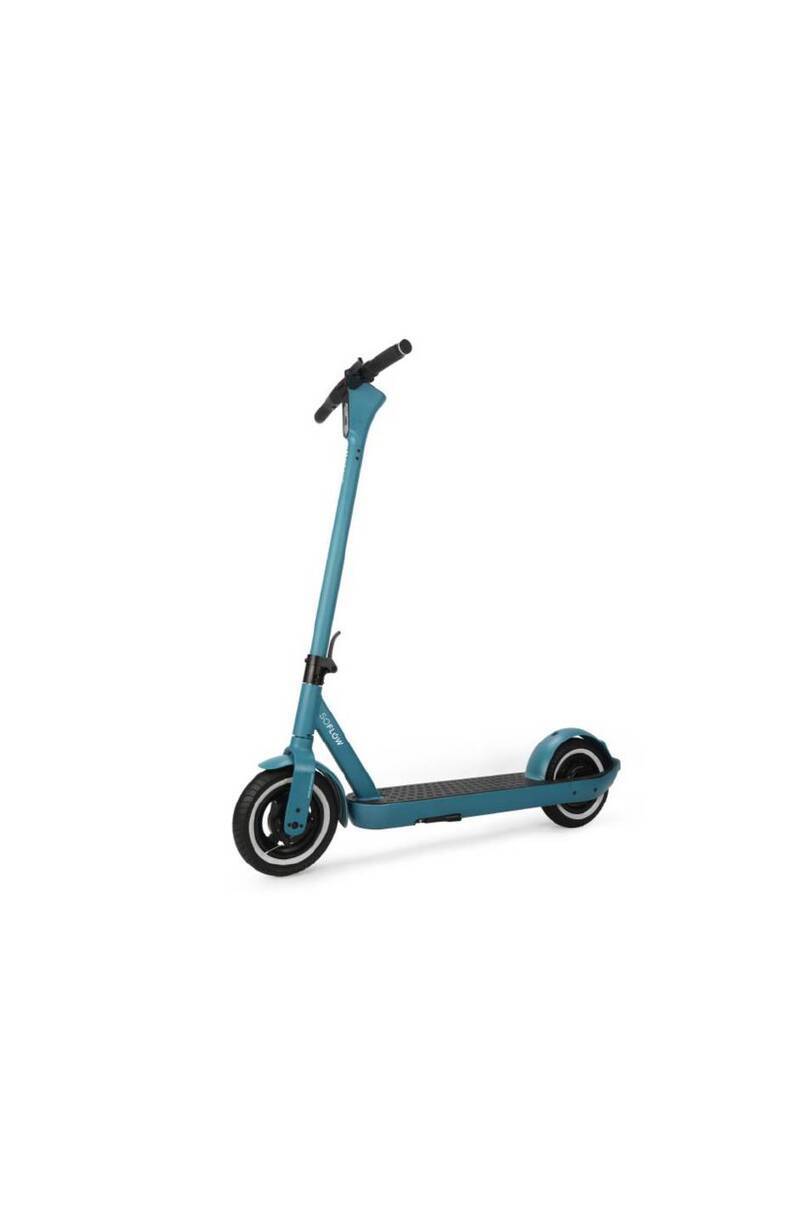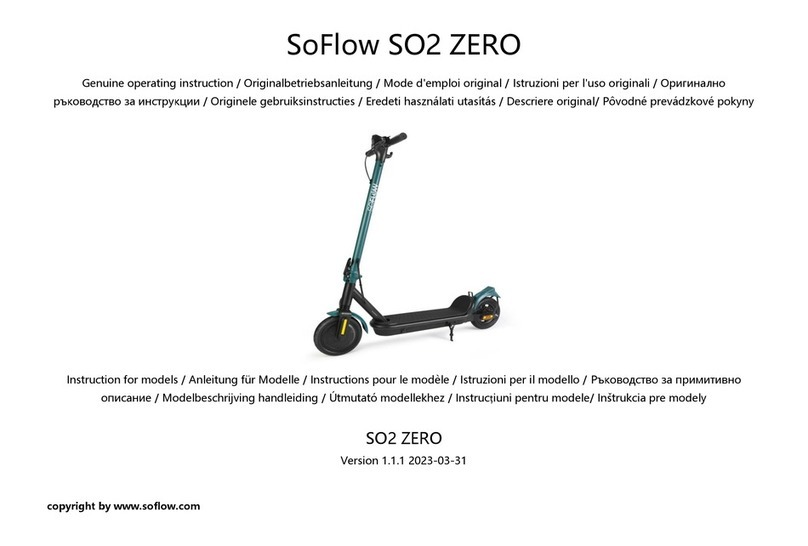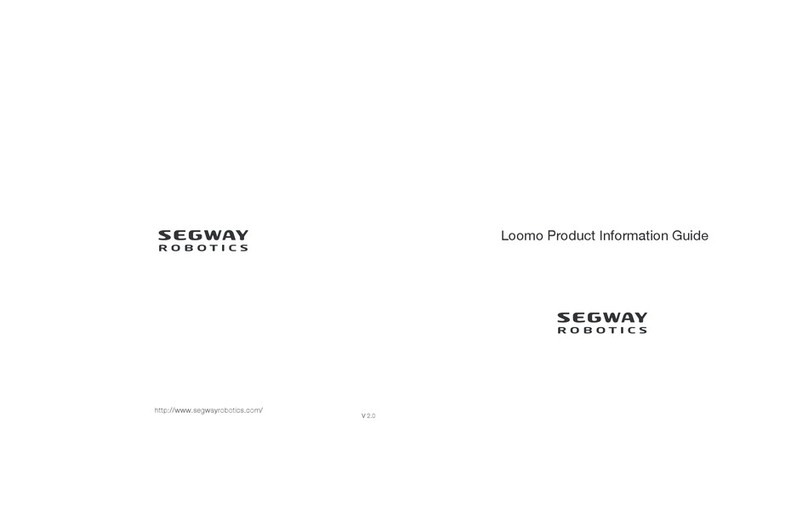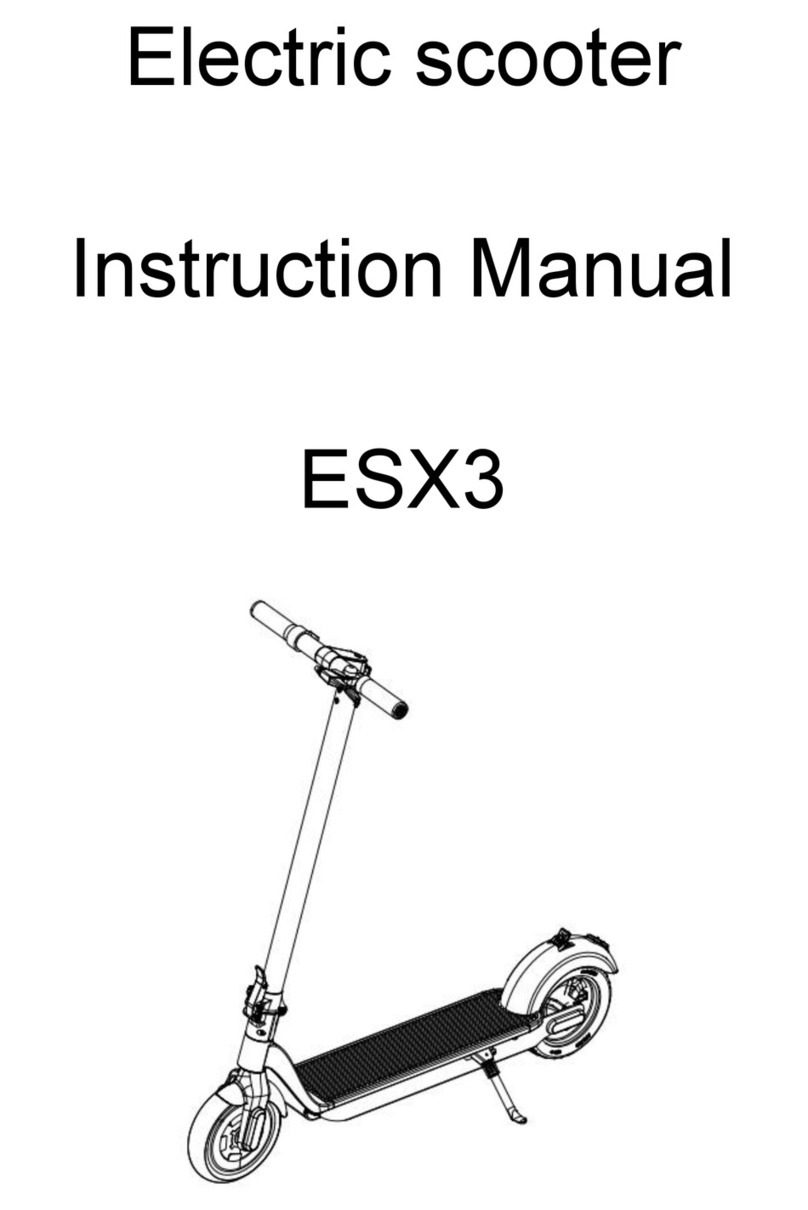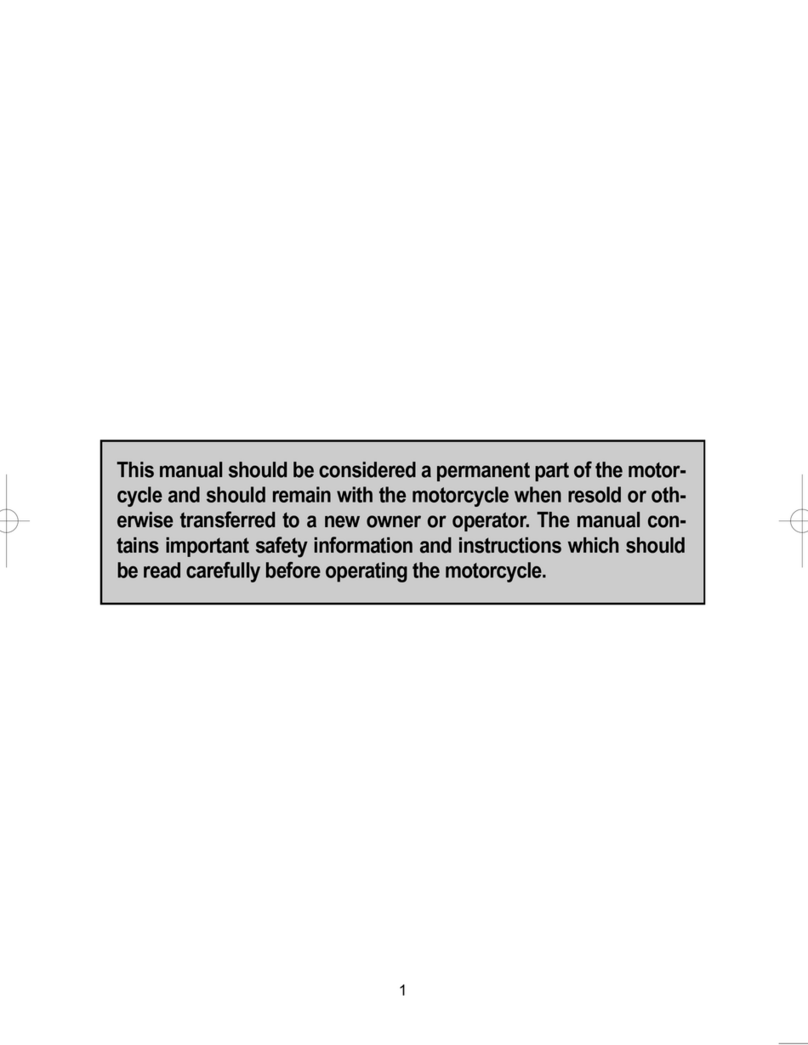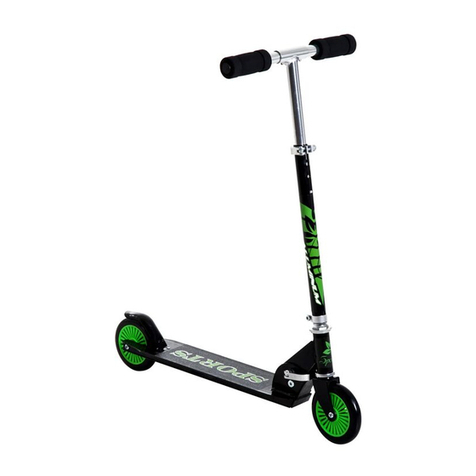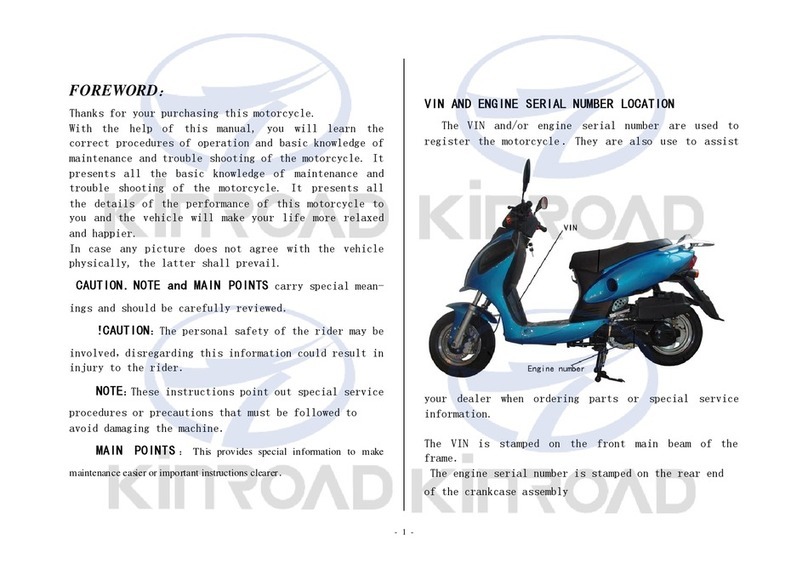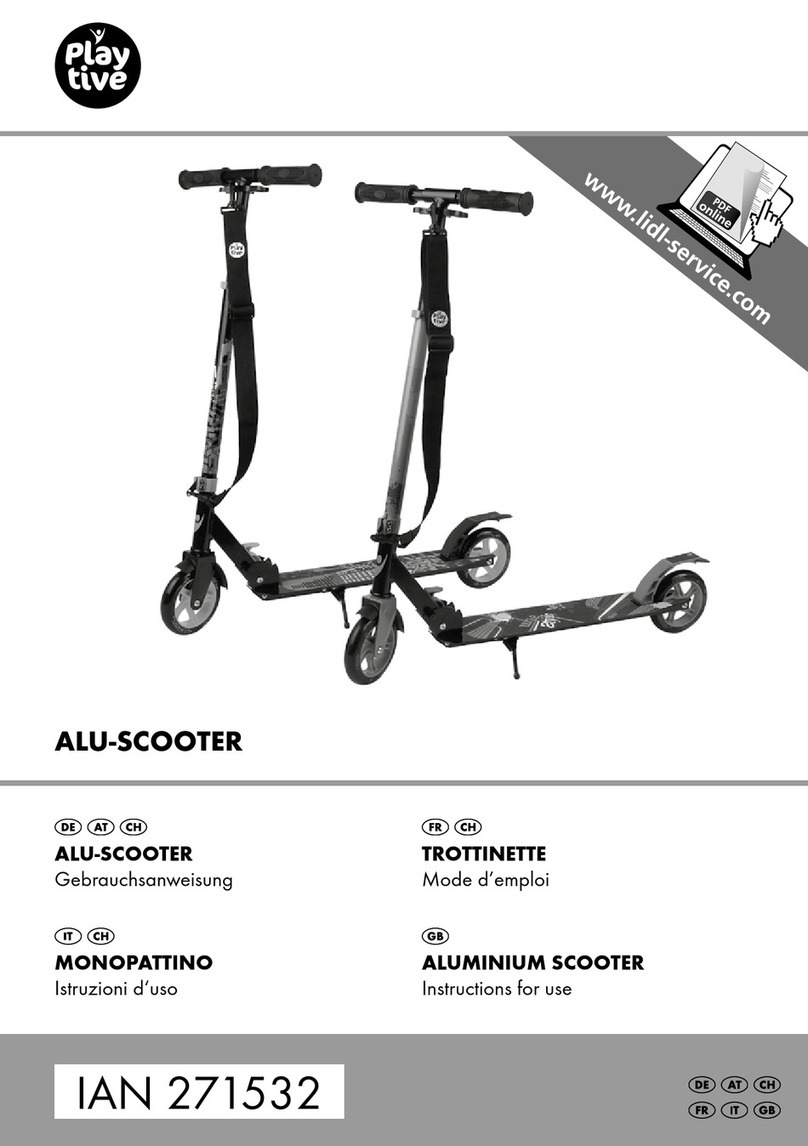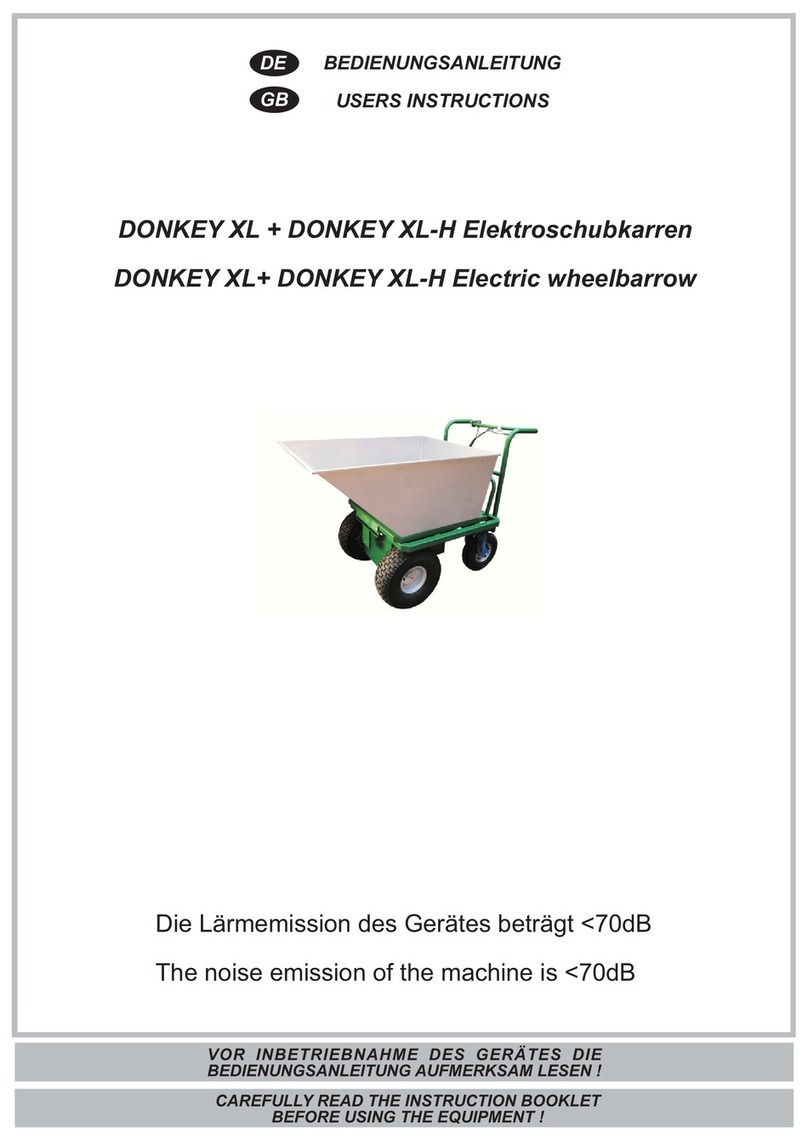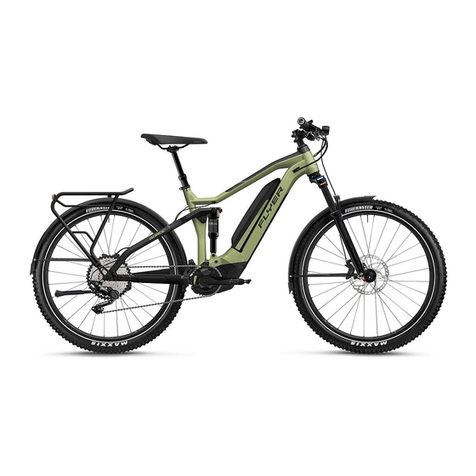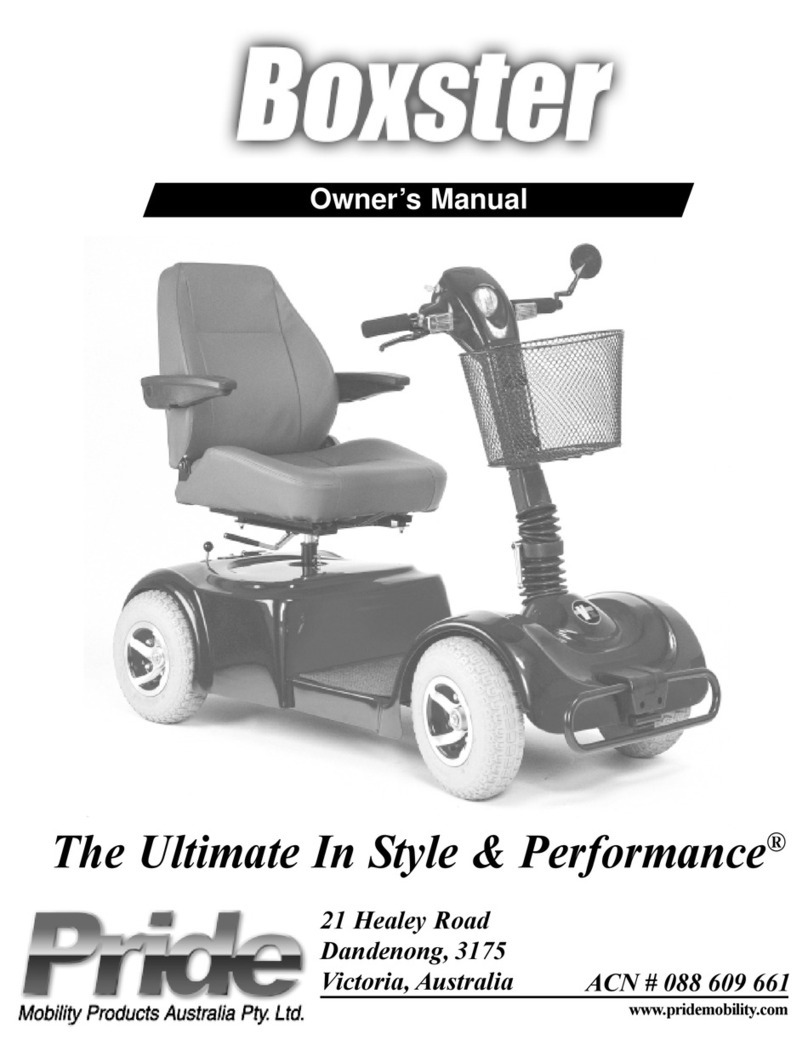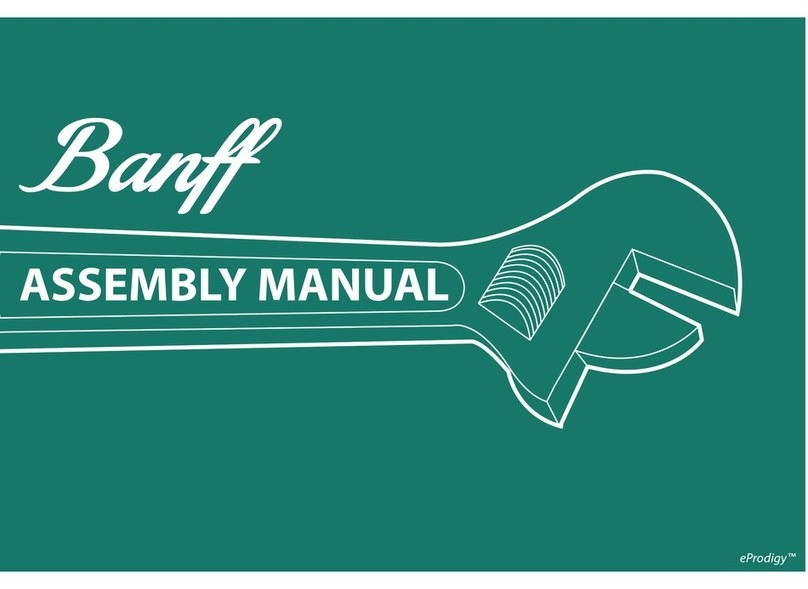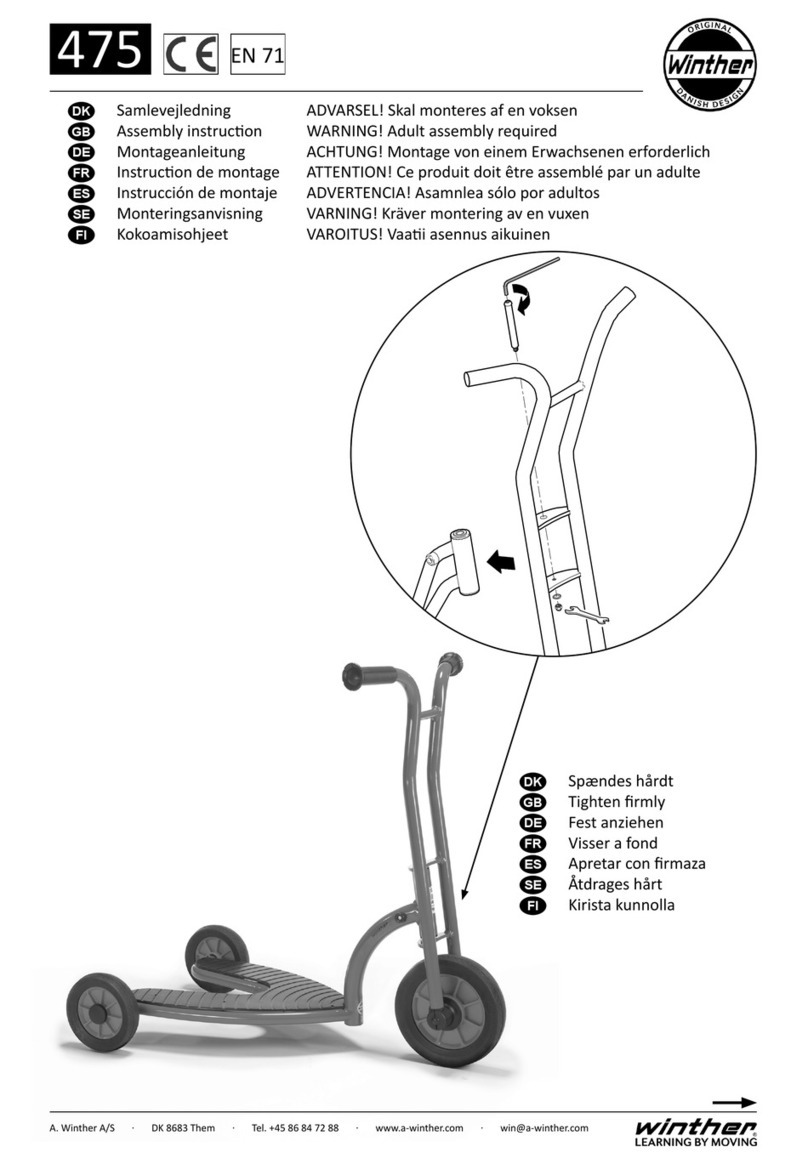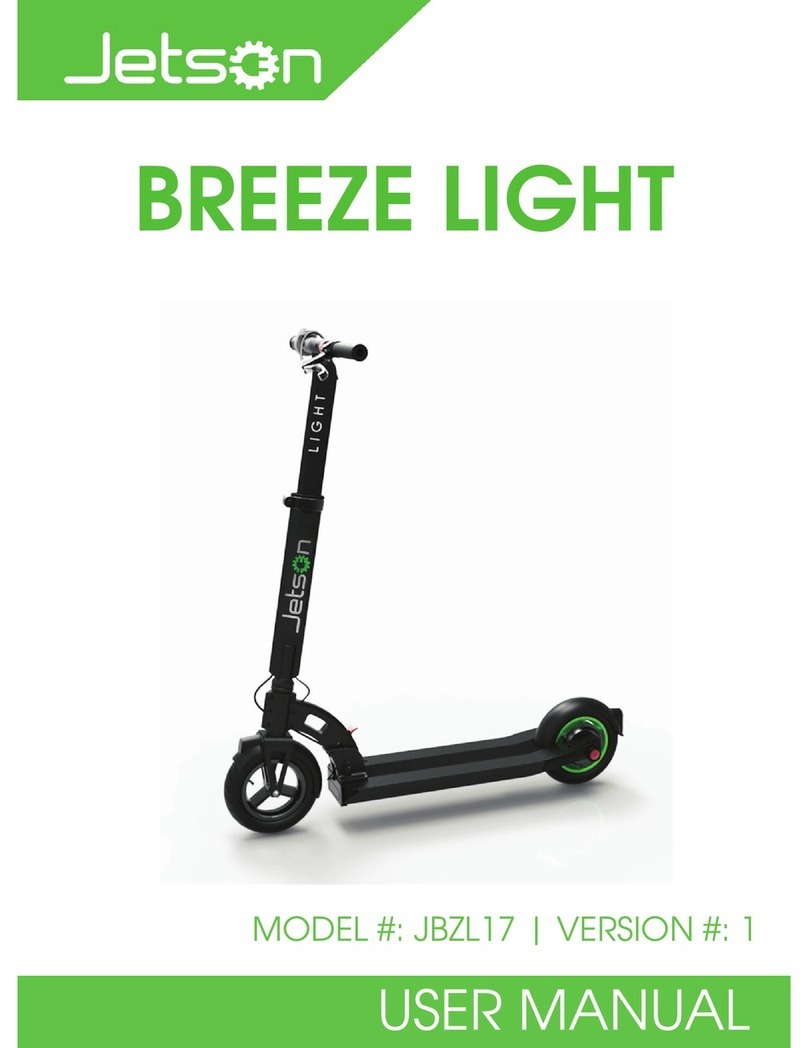9
2. Both tires must be in contact with the ground at all times. Avoid obstacles and slippery surfaces (such as snow, ice,
oil, sand etc.), which could result in a loss of balance or traction and cause a fall. The SO2 is intended for indoors or
use on smooth, flat surfaces. To prevent loss of traction, you must always be careful when driving and you must
identify and avoid slippery and wet surfaces, loose materials, slopes, tram tracks, potholes and other obstacles
(especially higher than 1 cm). The wheels must be able to grip the ground for you to stay upright.
3. Abrupt maneuvers and driving over slippery surfaces, bumps, and loose objects and materials, as well as
performing jumps and stunts and risky behavior in general, may cause it to lose traction and pose a risk to the
operator and the device and must be avoided therefore. The driving speed must always be adjusted to given
conditions (e.g. light, weather, other traffic participants, etc.).
4. Make sure to wear flat shoes (no high heels) when using the SO2. Ask a person to help you if you are not an
experienced user.
5. The SO2 may not be used by children under the age of 14 in accordance with legal requirements. These legal
requirements comply with German law. Check the relevant local and national laws of your country.
6. Do not exceed the maximum weight of 264 pounds (120 kilograms) –including backpacks and other items that
might be carried. Exceeding the weight limit could lead to injury of the driver and/or the SO2.
7. Never turn off the SO2 while you are riding.
8. Do not modify the SO2. Modifications could interfere with operating and could result in serious injury and/or
damage. Modifications will void the warranty.
9. The SO2 is designed for the use of one person only at a time. It must never be used by more than one person at a
time. Do not carry heavy or spacious objects with you when driving.
